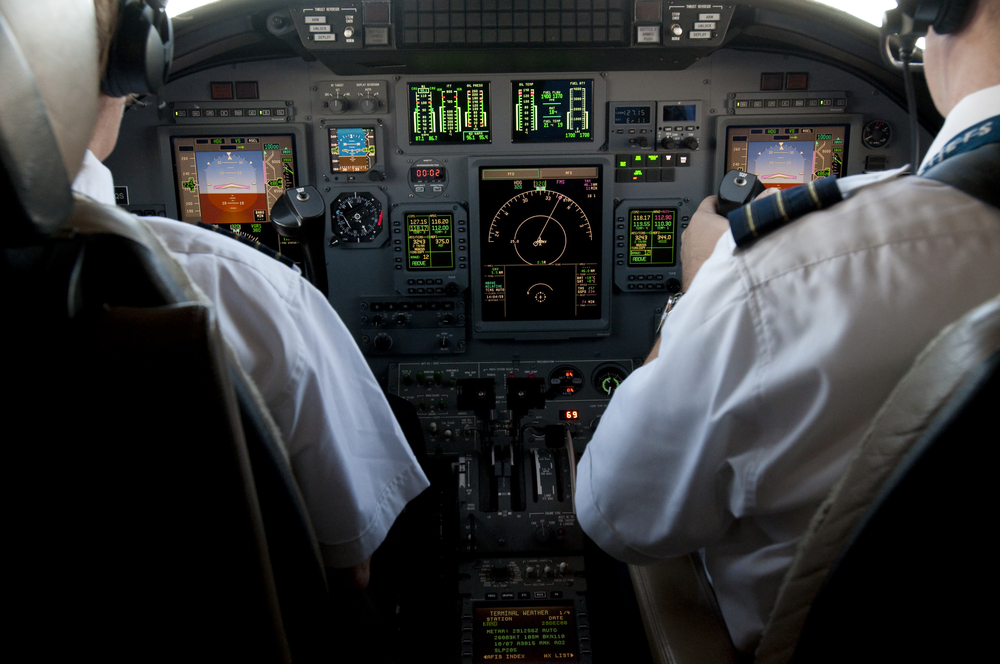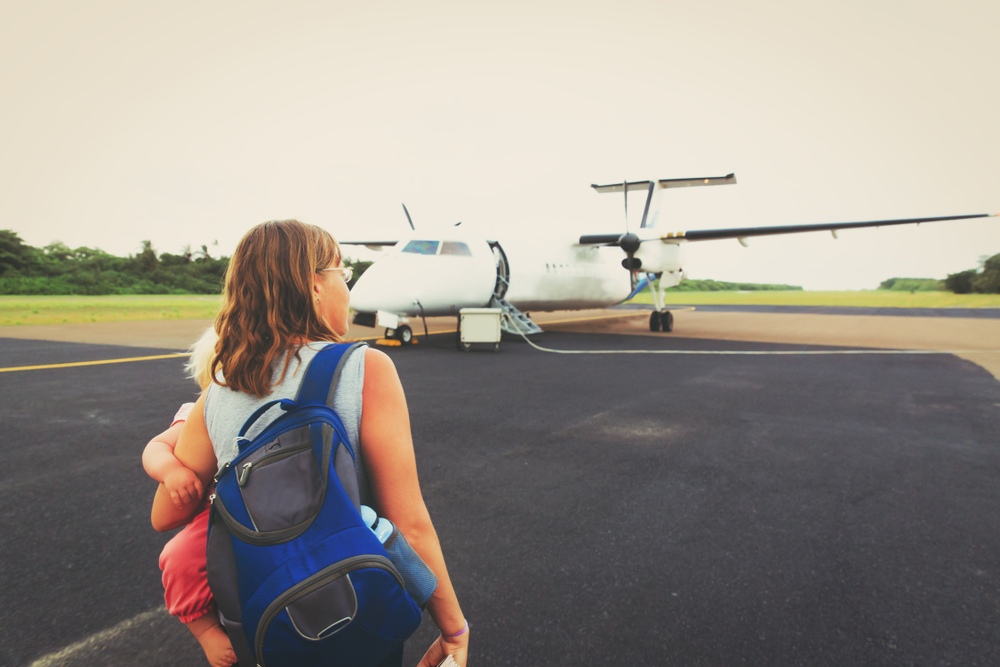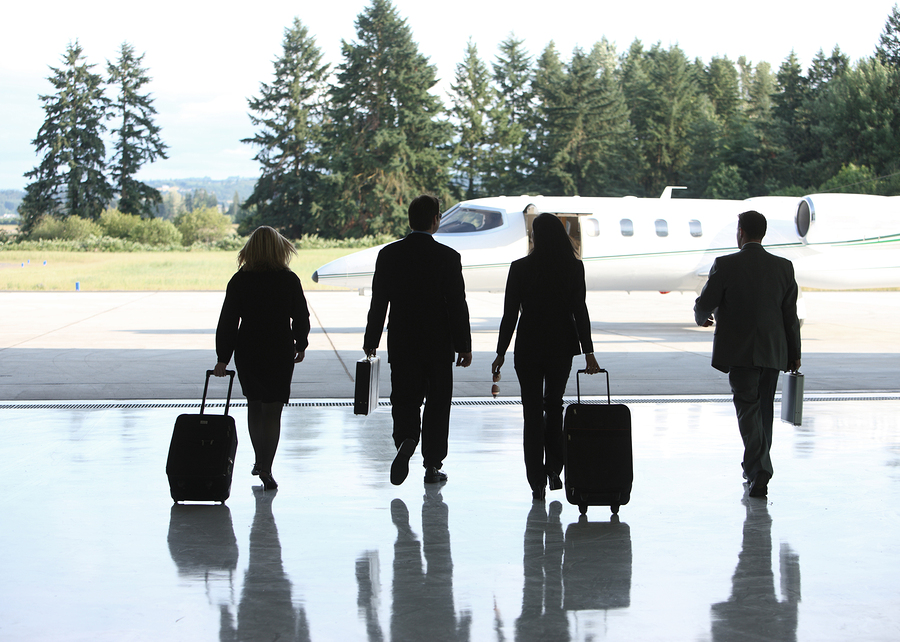Life is full of first-time experiences. Your first day of school. Your first kiss. Your first job. Your first time on a private jet. These are all exciting, scary moments because you have no idea what to expect, but you are excited to take that next step. Boarding a private jet for the first time is a vastly different experience from flying commercial — one many people are uncertain of because they’re not sure what to do.

It’s natural to be insecure about how to proceed — a familiar feeling with any new endeavor. There’s no reason to worry — a little information about how to book your private flight and what to expect goes a long way in bringing certainty to this new experience. If you’re hoping to get into the air on a charter flight, there are five ways to do it.
- Charter aircraft. Think of a charter company as an on-demand flight just for you. You’re paying for a ticket on a private plane. Fares can vary wildly from the lowest-cost flights ($1,200 per flight hour) to the highest-cost ($12,000 per flight hour), and largely depend on where you’re headed and whether you’re renting a single seat or the entire aircraft.
- Jet and fraction cards. When you purchase a jet card or a fraction card, you’re essentially setting aside a lump sum of money (typically starting at $25,000) to rent a certain number of hours on a private jet. Jet cards are becoming incredibly popular throughout the United States. As a result, the cost of purchasing one is falling all the time.
- Membership programs. A membership program works much like a jet card. Rather than funding a card, you buy into a specific fleet of aircraft and a particular set of services offered by individual companies. As a result, it’s essential to shop around and compare options before committing to a membership program.
- Fractional share ownership. Fractional share ownership sits somewhere between a membership program and flat-out ownership. Fractional programs offer customized service and more control over your flight time than other options, in exchange for monthly fees plus a nominal per-hour flight charge.
- Purchase. For fliers exceeding 200 hours of flight time, outright purchase could be the right choice. Purchasing an aircraft brings numerous advantages, not least of which is complete control over travel plans.
 Although charter flights are more expensive than their commercial alternative, they provide critical benefits. They’re safer, for one — and that’s to say nothing of the enormous savings in time and convenience that go hand-in-hand with a private flight.
Although charter flights are more expensive than their commercial alternative, they provide critical benefits. They’re safer, for one — and that’s to say nothing of the enormous savings in time and convenience that go hand-in-hand with a private flight.
For decades, many travelers remained wary of private flight because of misplaced concerns over cost, or belief that it’s challenging to find charter opportunities. Now, a new generation of companies have emerged, committed to making private flight more accessible than ever before. They’re finding plenty of demand from those willing to take the leap into something new, unknown, and exciting.
Are you using your private jet to fly yourself and your business partner to a meeting 600 miles away? Or do you plan on using your jet as a revenue stream, allowing people to book charters around the region? It’s your jet and you can do whatever you like, but you need to make sure you’re following proper Federal Aviation Regulations (FARs). Unbeknownst to many new jet owners, these simple examples are very different in the eyes of the Federal Aviation Administration (FAA). You need to know the difference between Part 91 and Part 135 operations.

The difference between Part 91 and Part 135 operations
The main difference between Part 91 and Part 135 operations largely has to do with the safety standards and regulations that go into the flight. If you’re thinking about buying a jet, it’s smart to get familiar with them so that you’re making a safe purchase that will meet your needs and expectations.
Part 91 governs general operating and flight rules for all civil, generally non-commercial aircraft, whereas Part 135’s goal is to “hold [commercial] pilots, aircraft, operations and even passengers to a higher standard than would pertain to someone providing his own transportation.” Part 91’s rules are always in effect unless a more restrictive Part 135 rule applies. If you’re operating your jet under a charter, Part 135 will apply.
Private versus charter
 Part 91 governs situations where the pilot is directly responsible for the entire private aircraft — like an automobile driver transporting around other private citizens. In contrast, Part 135 would be like having a commercial driver’s license: the safety standards are higher than private aircraft and the pilot must undergo more training to transport cargo or passengers for compensation.
Part 91 governs situations where the pilot is directly responsible for the entire private aircraft — like an automobile driver transporting around other private citizens. In contrast, Part 135 would be like having a commercial driver’s license: the safety standards are higher than private aircraft and the pilot must undergo more training to transport cargo or passengers for compensation.
Still not sure which FARs you’re subject to? Ask yourself a few simple questions.
- Are you flying the plane or hiring a crew?
- Are you receiving compensation for transport?
- Who owns the jet?
Start to look at whether your flight trends privately or if it hedges into the realm of commercial transport — a charter.
Ultimately, the difference comes down to safety. With charter flights, you can guarantee that your crew is well-rested, and they’ll only take off in generally accepted, safe weather conditions, whereas Part 91 has fewer regulations for private flights.
For example, Part 135 flights can only utilize airport runways where they can land in the first 80% of the runway, whereas Part 91 allows pilots to use any runway that meets their own runway length requirements. The maintenance standards for Part 91 also are less stringent than for charter flights; the FAA implemented Part 135 to set a standard of professionalism and safety to protect consumers.
When deciding to buy a jet, knowing how you’ll use it — and therefore whether Part 91 or Part 135 will apply — is key to picking the right aircraft.
The expert jet brokers at L & L International are here to help you acquire the perfect jet. Need to sell your jet? We can assist with that, too.
Contact the private aviation professionals online, at
sales@L-Lint.com, or at
+1 (305) 754-3313.
The business aviation sector posted strong numbers in April 2019, signifying a solid first quarter for BizAv. Total North American traffic is up nearly 2%, bolstered largely by Part 91 flights (non-commercial). Light and medium-sized jet charters have shown 11.3% and 12.1% increases, respectively. And even though large jet charters are down 13.2% since this time last year, the industry as a whole appears rock-solid.
Fractional flights are the central driver of these positive numbers, and it looks like we may be entering the golden age of BizAv.

The age of ride-sharing has propelled fractional flights
Fractional flights aren’t a new concept. In fact, it could be argued that the concepts of fractional flights and flight-sharing existed before ride-sharing. With the recent IPOs of both Uber and Lyft, the demand for ride-sharing appears to be cemented — regardless of the mode of travel. With the market opportunity for ride-sharing, fractional flights are a natural precursor.
The cost of flying is exponentially higher for consumers than it is for road travel. If travelers are willing to pay for ride-sharing services, why wouldn’t they pay for fractional flights? It’s this notion that’s reflected in BizAv’s strong first quarter numbers. Private travel is up because fractional flights are more accessible than ever before.
Who’s driving the industry?
Uber and Lyft represent the duopoly of the ride-sharing industry. The landscape for fractional flights isn’t much more diverse. Data from 2017-2018 points to Netjets as the clear market leader for fractional flights, with more than 365,170 hours of flight time booked in 2018 (almost equal to 2017 data).
Behind Netjets’ substantial market share is a middling group of players, each with a unique value proposition. Flexjet, which touts first-class service and accessibility to leading jets, saw 85,520 hours of flight time in 2018. Meanwhile, PlaneSense and Flight Options both saw roughly 60,000 hours of booked flights over the past two years total.
As of 2019, nine operators represent the fractional flights industry. But with the recent positive growth in the BizAv industry overall, the number of fractional flight providers may soon grow.
A look at fractional flights within the industry
The fractional flights segment of BizAv parallels the ride-sharing industry in many ways, but not perfectly. Uber customers aren’t buying stake in their driver’s car! However, both involve making transportation cheaper and more accessible. Just like someone might request an Uber instead of taking the subway, an executive can purchase a fractional flight share instead of flying business class.
 While the prevalence of fractional flights has been rising since the 1990s, their foray into the flight-sharing space may not be as smooth. The Federal Aviation Administration (FAA) has planted a firm stance against flight-sharing, limiting the growth trajectory of fractional flights into a new market. That said, should the FAA ruling change, BizAv has yet another runway of growth to explore.
While the prevalence of fractional flights has been rising since the 1990s, their foray into the flight-sharing space may not be as smooth. The Federal Aviation Administration (FAA) has planted a firm stance against flight-sharing, limiting the growth trajectory of fractional flights into a new market. That said, should the FAA ruling change, BizAv has yet another runway of growth to explore.
Fractional flights by themselves have driven the BizAv industry to new heights in the start of 2019. Growth is expected to continue — possibly unprecedented if ride-sharing takes to the skies. Either way, data says we’re likely entering the golden age of BizAv.
The expert jet brokers at L & L International are here to help you acquire the perfect jet. Need to sell your jet? We can assist with that, too.
Contact the private aviation professionals online, at
sales@L-Lint.com, or at
+1 (305) 754-3313.
Flying in a private jet is a luxurious experience. When travelers fly privately for business, they get to enjoy a quiet cabin, extra room to lounge in, and a host of amenities while in the air. However, everyone on board is responsible for maintaining this pleasant atmosphere.
How to dress and act can be difficult for many first-time private flyers to navigate. Fortunately, the rules of “jet-iquette” — or jet-etiquette — are largely the same as on the ground. These unspoken rules help all onboard keep the aircraft clean and safe as well as ensure guests don’t offend their hosts. When travelling for business, it’s important to remember to remain professional — even when flying solo.
Keep these 7 tips on “jet-iquette” in mind the next time you fly:
1. Be on time.
In many cases, business aviation passengers don’t own the aircraft they’re flying in. The jet’s pilot, crew, and other passengers have places they need to be, too, so it’s important to show up for the flight on time. Being late can also mean additional fees. That’s why it’s best to be early, so show up around 20 to 30 minutes before the scheduled departure time.
2. Board after your host.
An unspoken rule of private flying is that the host gets the first pick of the seats. Travelers should avoid boarding before their hosts so they can select a seat, and others won’t have to endure the embarrassment of being asked to move.
3. Respect the crew.
The pilot and crew are there for everyone’s safety. As trained professionals, they have years of experience in the business aviation industry and want to make the flight as pleasant as possible. If they make a request, follow it promptly and without issue.

4. Mind your manners.
Just as manners are important in business settings on the ground, they are equally — if not more — important in the air. Be polite to crew members and any other passengers, and act professionally.
5. Pack lightly.
Even when there are only a few passengers on board, remember that private jets are small and have a limited capacity for “stuff.” Try to pack as lightly as possible to keep the cabin clear and cargo space open for other passengers’ belongings. If the flight has baggage limitations, always respect them.
6. Stay professional.
 Flying in luxury can make some feel like it’s okay to kick back and relax. While this is true to a point, it’s also important to remain professional. Dress in business-casual or business-appropriate clothing when flying for business and remember to maintain a professional composure to represent the host and company well.
Flying in luxury can make some feel like it’s okay to kick back and relax. While this is true to a point, it’s also important to remain professional. Dress in business-casual or business-appropriate clothing when flying for business and remember to maintain a professional composure to represent the host and company well.
7. Be discreet.
Travelers often use private aviation for confidentiality purposes. While luxurious aircraft interiors might tempt travelers to snap pics and share them online or with friends, it’s best to avoid this for the safety and security of everyone else on board.
Flying privately for business can be a great experience. When you have the opportunity, make sure to look and act appropriately so everyone on board can enjoy the flight. And if you have questions about chartering private aircraft or purchasing jets for business purposes, speak with an experienced professional to get the best information in the industry.
For most travelers throughout the United States, commercial airline travel is the standard way to get from one place to another. Charter flights and private air travel are also options, but these often come at higher prices. Another more affordable form of air travel — flight-sharing — may soon be possible for U.S. travelers, making it easier to travel to and from destinations while lowering the costs of flying for both pilots and their passengers.
Flight-sharing and its status in the United States
Flight-sharing is essentially a method of carpooling via aircraft. Licensed pilots find passengers who want to travel to the pilots’ destinations aboard their private aircraft for a fee, which helps offset the cost of flying. In doing so, pilots spend less money enjoying their hobby while passengers receive less expensive flights.
 For decades, pilots have been identifying potential passengers by posting flight schedules on bulletin boards and communicating with passengers directly, but people are attempting to simplify this process using new technology. Apps and websites allow passengers to search for flights when and where they desire as well as connect with pilots offering those flights.
For decades, pilots have been identifying potential passengers by posting flight schedules on bulletin boards and communicating with passengers directly, but people are attempting to simplify this process using new technology. Apps and websites allow passengers to search for flights when and where they desire as well as connect with pilots offering those flights.
However, flight-sharing via mobile apps isn’t allowed in the United States. The Federal Aviation Administration (FAA) has previously shut down efforts to legalize flight-sharing in the U.S., claiming pilots would become “common carriers” and subject to more restrictions and require more licenses. Times may be changing, though, as new bills are emerging to determine who’s considered a “common carrier” in the aircraft industry, potentially lifting restrictions on pilots who want to opt into these service types.
An overseas flight-sharing model
Other foreign countries —especially those in the European Union (EU) — don’t share the FAA’s view on flight-sharing. In the United Kingdom (U.K.), this method is a fast-growing industry and could serve as a model to a budding flight-sharing industry in the U.S.
With the help of the European Aviation Safety Agency (EASA), pilots and consumers can fly safely and efficiently using flight-sharing services. In fact, the EASA created a safety charter that identifies rules for both pilots and passengers operating under flight-sharing programs, and numerous platforms have signed on.
One such platform, Wingly, has seen tremendous success, allowing 150,000 users to utilize the private aircraft over 10,000 licensed pilots operate throughout England, France, and Germany.

The U.K. has also implemented other restrictions on flight-sharing to keep the practice safe, effective, and non-disruptive to commercial air travel: Flight-sharing aircraft can only carry up to six passengers each, passengers and pilots split the direct costs of flying, and neither passengers nor pilots can profit from the flights.
Potential benefits of flight-sharing to U.S. markets
If the U.S. legalizes flight-sharing via mobile apps, it could have numerous potential benefits to pilots and passengers across the nation.
- Rural American access — In the commercial aviation sector, rural America is largely considered “fly-over” territory, making it difficult for rural passengers to fly to and from rural areas. Flight-sharing operating out of smaller local airports across each state could provide opportunities for these passengers to travel more often.
- Less burden on pilots — Flying is an expensive hobby, especially when the burden of cost is entirely on the pilot. Pilots must log a certain number of flight hours per year to remain licensed. If passengers were more readily available, pilots could defer costs to others, afford to fly more often, and remain licensed.
- More BizAv opportunities — Flight-sharing provides opportunities for those in the business aviation sector by creating more flight options for pilots and passengers and offering travel at more affordable prices.
If the U.S. legalizes flight-sharing, it has the potential to open doors in the aviation industry. By following the lead of other countries like those in the EU, American pilots may experience a surge in localized air travel and an interest in flying.
Purchasing a business or private jet while flight-sharing is at a tipping point may prove advantageous for flight enthusiasts — and open a revenue stream to owners as they can sell flight-sharing services when they’re not enjoying their private jets themselves.
The expert jet brokers at L & L International are here to help you acquire the perfect jet. Need to sell your jet? We can assist with that, too.
Contact the private aviation professionals online, at
sales@L-Lint.com, or at
+1 (305) 754-3313.


 Although charter flights are more expensive than their commercial alternative, they provide critical benefits. They’re safer, for one — and that’s to say nothing of the enormous savings in time and convenience that go hand-in-hand with a private flight.
Although charter flights are more expensive than their commercial alternative, they provide critical benefits. They’re safer, for one — and that’s to say nothing of the enormous savings in time and convenience that go hand-in-hand with a private flight.




